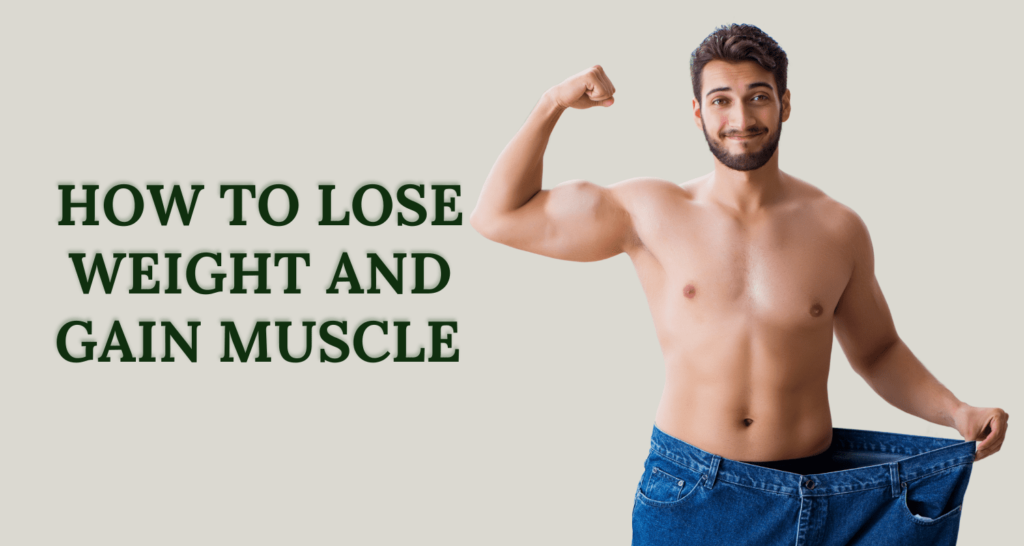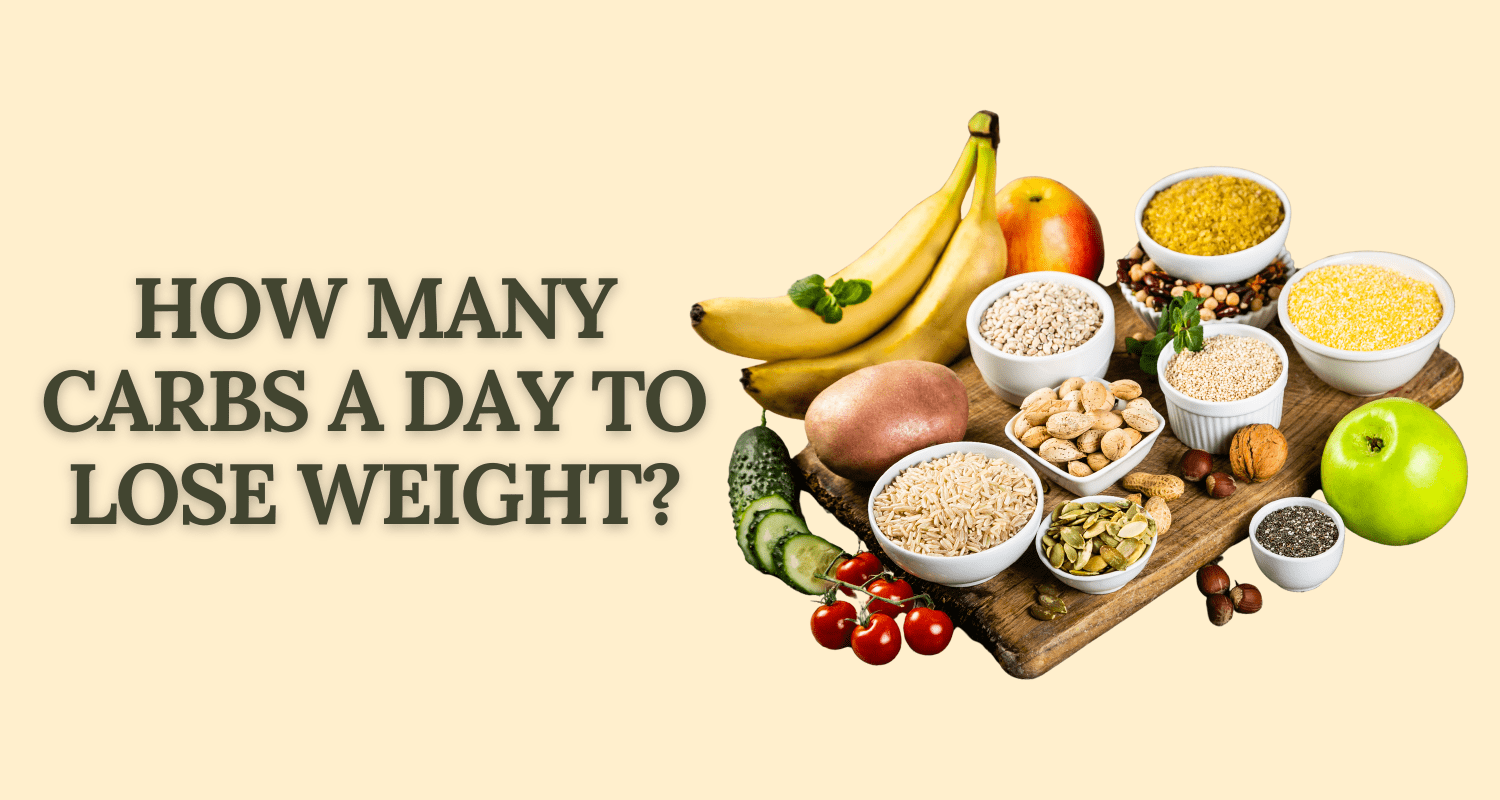Did you know that body fat percentage shows your health better than weight? Many only look at weight numbers when losing weight. They forget that high body fat can lead to serious diseases like diabetes and heart illness. So, to get healthy and improve your body, try a mix of losing weight and gaining muscle.
The key is body recomposition, a method that involves simultaneously reducing body fat and increasing lean muscle mass. This approach prioritizes overall health improvement rather than just shedding pounds. By getting stronger and improving your body’s functionality, you can significantly reduce the risk of various diseases. While it requires time and effort, the results on how to lose weight and gain muscle are invaluable.
In this article, we will explore the balanced approach of body recomposition to how to lose weight and gain muscle. Additionally, we will provide expert tips for effective weight loss and muscle gain.
Let’s dive into the strategies for how to lose weight and gain muscle.
Key Takeaways:
- Body recomposition means losing fat and gaining muscle for better health.
- It’s more important to lose fat and gain muscle than just lose weight.
- How to lose weight and gain muscle? To lose fat, eat fewer calories and do strength workouts.
- Eating a lot of protein helps build muscle while losing fat.
- For success, use resistance training, good food, and focus on muscle gain.
What is Body Recomposition?
Body recomposition is changing your body by losing fat and gaining muscle. It’s about getting a healthier and more balanced body shape. This differs from just trying to lose weight. With body recomposition, you look at both fat loss and muscle gain. This helps you look better and be healthier.
To understand your health, you need to look at more than just how much you weigh. You should also think about where your body stores fat and muscle. To change this, use a mix of eating right and working out. These strategies help you shift your fat-to-muscle ratio in a healthy way.
Getting stronger is a big part of changing your body. It helps you build muscle and looks better. Plus, more muscle means you can eat more. This makes it easier to stay at a healthy weight and lower your body fat.
Preserving Muscle Mass
A study from 2013 found that eating more protein while dieting can save your muscles. Athletes who ate the most protein saved the most muscle. The experts say you might need about 1.1 to 1.4 grams of protein per pound every day to keep your muscles strong on a low-calorie diet.
It’s also great to eat protein all day long. Foods like eggs, chicken, and dairy, eaten every few hours, help your body keep and build muscle.
Improving Body Composition
Changing your body means both growing muscle and losing fat. It’s possible to do both at the same time, especially if you’re already fit. Working out with weights two to three times a week helps your muscles grow and improves your body shape.
Doing heart-healthy cardio three to five times a week helps burn fat. For the best results, aim for 75 minutes of hard work or 150 minutes of moderate exercise a week. This also keeps your heart in good shape.
It’s not just about lifting and running. To stay healthy overall, don’t forget to stretch and move. These exercises help prevent injuries and make your whole body feel good during your changing phase.
Old ways of bodybuilding might tell you to eat a lot and then cut back to slim down. But, body recomposition is about a steady, healthy approach. It focuses on eating well and being active every day. This is better for long-lasting health and fitness than sudden, big changes.
Cycling Diet and Protein Intake
Many people in body recomposition use a diet that changes their calories. They eat more when they work out, and less when they rest. This helps with muscle growth and losing fat. As for how much protein and how to increase protein intake, it can be different for each person. But, if you weigh about 165 pounds, aim to eat between 110 and 150 grams of protein daily.
Body recomposition is not a quick fix. It’s a way of living. It needs you to stay on track, eat right, and exercise regularly. The changes you’re looking for may take a while to show up, but they are worth it.
Body Recomposition vs. Weight Loss
In the search for a healthier body, many paths can be taken. Body recomposition aims for a balance between muscle and fat. This is unlike weight loss plans, which mostly cut down on body fat.
Just looking at body weight doesn’t tell the whole story of health and fitness. Knowing your body fat percentage and muscle-to-fat ratio is key. They give a true picture of how fit and healthy you are. With body recomposition, you can shed fat and gain muscle. This makes for a stronger and fitter body.
Weight loss schemes often want quick results. But body recomposition prefers lasting improvement in your body’s makeup. Though it might take longer to see changes, it’s better for your health. This method burns fat while boosting muscle. So, you end up looking and feeling better.
Through focused exercise and eating right, body recomposition can shape your body in weeks. Results can show in as little as 4 to 12 weeks, depending on the person. Yet, typical weight loss plans can reduce muscle along with fat. This often leads to less attractive results and is harder to maintain.
One big difference between body recomposition and weight loss is the goal. Body recomposition aims to trade fat for muscle. So, your body becomes leaner and stronger, not just thinner.
Body recomposition also helps in the long run. It boosts metabolism, and strength, and reduces risks of health issues like diabetes and heart problems. Moreover, this strategy is proven to work better and be easier to keep up with than the usual bulk-then-cut approaches. People have lost a lot of fat and gained muscle in just twelve weeks. Bioelectrical impedance scans showed this.
In the end, body recomposition changes more than just your weight. Even though it’s not a fast journey, the health rewards and staying power make it worth it. It focuses on your whole body, not just the numbers on the scale. This leads to changes that last and a better life overall.
How to Lose Fat
To lose fat, it’s key to make changes in how you live and eat. These changes can put you in a calorie shortfall to burn fat. This includes choosing better foods, getting enough protein, and eating more fiber.
Create a Calorie Deficit
Eating fewer calories than you use is a must to shed fat. This gets your body to burn its fat for fuel. It’s vital to watch your food intake, making sure you eat less than what you burn, to see results.
Increase Protein Intake
Eating more protein aids fat loss and helps you keep muscle. It’s shown that a higher protein diet keeps muscle during weight loss. Include foods like meats, fish, eggs, and beans. Make sure to get enough protein for your weight and goals.
Focus on Diet Quality
A good diet quality is crucial for fat loss. Ditch processed foods, lower carbs, and cut sugar. Instead, choose whole foods like veggies, fruits, lean meats, and good fats. This choice is healthy for you and helps you lose weight.
Increase Fiber Intake
Eating more fiber can help trim fat, especially around your belly. Foods high in fiber keep you full, control your hunger, and aid digestion. Make sure to eat plenty of fiber-rich foods for your overall efforts to lose weight.
How to Gain Muscle
Gaining muscle is all about doing exercises like resistance or strength training. These workouts make your muscles work hard. They not only help you get bigger muscles but also reduce body fat. You get stronger and leaner as you grow those muscles.
Studies show that doing resistance training can lower your body fat. It can also make you stronger. In a 12-week program, people lost 10% of their fat and gained almost 9% more muscle. Clearly, working out this way is great for losing fat and building muscle.
Protein is also a big deal when you want to gain muscle. You need it to build muscles and lose fat. The International Society of Sports Nutrition says you should aim for at least 3 grams of protein per kilogram of your body weight. This helps with fat loss and gaining lean muscle. Getting enough protein means your muscles can grow and repair properly.
But, you also need to eat more calories than you use to grow your muscles. This is called a calorie surplus. It gives your body the extra energy it needs for muscle growth.
Yet, it’s important to eat a balanced diet even with more calories. Focus on whole foods and a mix of nutrients. This supports your overall muscle growth as you aim to get bigger.
Doing many different resistance exercises can help you grow in a balanced way. Include exercises like pushups, planks, crunches, deadlifts, squats, and lunges in your routine. This way, you work out all your muscles for an even development.
Stick to these tips regularly to build muscle and reshape your body. It takes time and dedication to see changes in your body. But, if you keep at it and trust in what you’re doing, you will reach your muscle goals.
Body Recomposition: The Balanced Approach
To get a balanced body recomposition, focus on losing fat and growing muscle. Create a calorie deficit for shedding fat. At the same time, keep up your protein intake to help your muscles grow.
Eat at least 0.64 grams of protein per pound of your body weight for a better body shape. Enough protein helps keep your muscles while cutting calories. Athletes who ate the most protein, about 1.14 to 1.3 grams per pound, kept more muscle.
Switching carbs to foods high in protein, good fats, and fiber might help lose fat by reducing insulin levels. Adding more high-fiber foods to your meals, like veggies and beans, could cut down belly fat.
It’s important to lift weights while trying to reshape your body. Aim to eat between 0.73 and 1 gram of protein for every pound you weigh each day to boost muscle and power. Adding 35 extra grams of protein through a supplement each day during weight lifting can increase your lean muscle mass.
For a balanced body recomposition, you need a varied diet. A good plan might be 30-35% carbs, 30-35% protein, and 30-40% fats. Having days where you eat more carbs (up to 50% of your calories) can help your muscles.
It’s also smart to eat most of your calories evenly throughout the week. Save 15-20% of your food for after your workout on some days. This way of eating, plus working out, can help you lose fat and gain muscle for a healthier body.
Can You Lose Weight and Gain Muscle at the Same Time?
Many people want to lose weight and build muscle at once. This is called body recomposition. You can do it by doing strength training, eating enough protein, and changing your calorie intake. This approach can help you reach both goals.
The Importance of Resistance Training and Protein Intake
Doing resistance training is key for body recomposition. It helps grow and shape your muscles. When you lift weights, your muscles break down and grow back stronger. By lifting heavy weights, you can get the best results.
You also need to eat a lot of protein. Proteins help your muscles grow and fix themselves. It’s best to eat 1 gram of protein for every pound you weigh. This supports muscle growth during your body recomposition.
The Role of Calorie Cycling
Calorie cycling can help with both losing fat and gaining muscle. This method changes your calorie and macronutrient intake depending on your activities. For example, eat more calories on weightlifting days and less on cardio days. This method helps you keep a calorie deficit for fat loss while having enough energy for your workouts.
Achieving Successful Body Recomposition
To succeed in body recomposition, combine resistance training, protein intake, and calorie cycling. It will help you grow muscle and burn fat. Remember, this process takes time. Be patient and keep at it.
Do exercises like squats, deadlifts, and presses to work many muscles. This can help you gain muscle and lose fat. Also, choose low-intensity cardio over high-intensity for better muscle gains.
It’s smart to talk to a fitness expert before starting any new plan. They can give you safe advice. With the right combination of training, food, and calories, you can achieve your goal of losing weight and gaining muscle.
Best Exercises for Body Recomposition
When aiming to reshape your body, it’s crucial to use a mix of resistance and cardio workouts. Resistance exercises help you gain and keep muscle. Cardio workouts, on the other hand, are great for losing fat. Together, they boost muscle growth while burning off excess fat.
Focus on compound exercises during resistance training. This means exercises like squats, deadlifts, bench presses, and rows. They work many muscles at once. As a result, your muscles get bigger and stronger. This helps improve your body shape.
Try to fit in 2-3 resistance workouts every week. It’s vital to give your body time to rest and recover. Start with weights that make you work hard, aiming for 6-12 reps in a set. As you get stronger, start lifting heavier weights.
Cardio is essential to cut down on calories and shed fat. You have many options, like HIIT and MISS.
HIIT is quick and powerful, taking between 10 and 30 minutes. You switch between high effort and slower active periods. It not only burns calories but also boosts your heart health.
MISS cardio is when you do moderate exercise for a longer time. Activities like jogging or cycling can help. It’s good for calorie burning and doesn’t get in the way of gaining muscle. You could do this on days you don’t lift weights.
Always pay attention to how your body feels. Slowly make your workouts harder and longer. Balancing resistance and cardio exercises is the best way to transform your body.
Conclusion
How to lose weight and gain muscle? Body recomposition is a key and it’s about the right balance. It’s working towards losing fat and gaining muscle. To do this, you need to eat well, exercise regularly, and focus on adding lean muscle. Being consistent, patient, and living healthily are keys here.
To build muscle, eat more than your body burns, about 300 extra calories a day. You should also aim for 1.6 to 2 grams of protein per kilogram of your weight every day. Aiming for a whole-body workout is important for the best muscle growth.
After tough workouts, give your muscles a day or two to recover for them to grow stronger. And, don’t forget to get enough sleep. Sleep helps your muscles recover and grow well.
If your goal is to lose fat, mix it up with some endurance training such as HIIT. A combination of strength training and HIIT, with a good diet, is great for losing fat.
It’s vital to eat well while slightly cutting calories to keep your muscles and melt the fat. You might need the advice of a fitness pro or dietitian, especially if this journey is new for you on how to lose weight and gain muscle.
So, body recomposition means getting the right balance through diet and exercise. By sticking to these tips and living healthily, you will see progress on how to lose weight and gain muscle. You’ll get healthier and in better shape, both losing fat and gaining muscle.
FAQs
How to lose weight and gain muscle?
Combine strength training with a high-protein diet and a caloric deficit to lose weight and gain muscle simultaneously.
Can you lose weight and gain muscle at the same time?
Yes, you can achieve both weight loss and muscle gain simultaneously with proper nutrition and exercise.
How to turn fat into muscle?
Fat cannot be directly converted to muscle; instead, focus on burning fat through a caloric deficit and building muscle through strength training.
How do you lose fat fast and gain muscle?
Prioritize high-intensity interval training (HIIT) and resistance training, while maintaining a balanced protein-rich diet.
Should I lose fat before building muscle?
It’s possible to do both at once, but some prefer to focus on fat loss first to make muscle gains more visible.
Does lifting weights burn fat?
Yes, lifting weights increases muscle mass, which in turn boosts your metabolism and helps burn fat.
Can belly fat be converted to muscle?
Belly fat cannot be converted to muscle directly; you need to reduce overall body fat through diet and exercise while building muscle with targeted strength training.
Disclaimer: This content, including advice, provides generic information only. It is not a substitute for a qualified medical opinion. Always consult a specialist or your doctor for more information. Nutrition Cult does not claim responsibility for this information.




